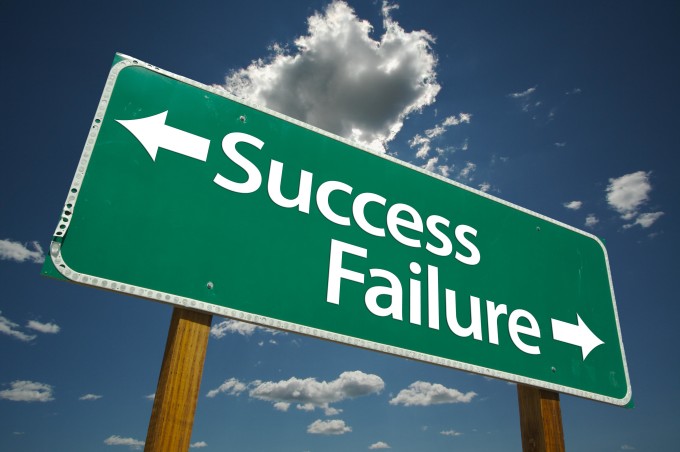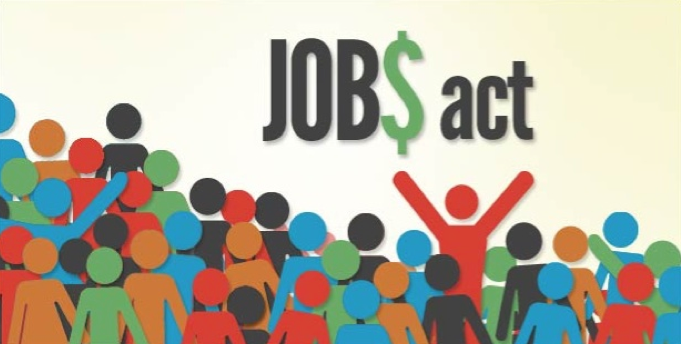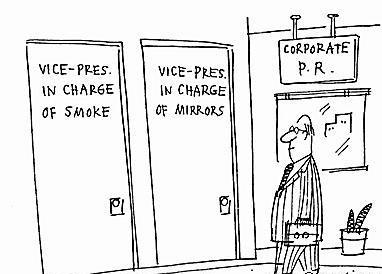
by John Cataldi | Sep 30, 2013 | Random thoughts - sometimes daily
I have just concluded a 15-minute conversation with a highly respected and skilled, Fortune 1000 CXO that has convinced himself of the impossibilities of a directive given to him by his board. The entire conversation revolved around the unfeasibility that this task could be completed within the timeframe or budgets allocated. He asked my thoughts and I agreed with his grim outlook. I said, “In my experience, if YOU believe something is insurmountable, the likelihood of a positive outcome is negligible. However, I do believe that with the right team, partners and mindset that your directives can be accomplished on time and within budget”. He stated, “How can you say that I would fail, where you believe that you could succeed?” My rebuttal was simple, “Where you foresee an insurmountable obstacle, I see a challenge to overcome.”
A story that comes to mind is that of the “Stuck Truck”. In which an oversized truck becomes wedged midway through a busy DC tunnel during rush hour, by pure chance the location of the trucks dilemma was directly underneath gas and cable conduits that were secured just a few feet above the tunnels ceiling. DOT engineers, a towing crew and police spent hours are trying to figure out how to dislodge the truck safely without causing damage to the tunnel or endangering city workers. Several hours and two failed attempts by city crews resulted in the inevitable conclusion that it cannot be done without cutting away a section of both the bridge and the truck trailer. However, the observations of a 9 year old girl, seeing the incident, asked her daddy, what don’t they just let the air out of the tires? Thus, a little girl was able to solve a traffic nightmare and a perceived engineering impossibility by presenting a solution from a fresh, unbiased perspective.
I am not suggesting that every problem has a simple answer. What I am suggesting is not to look at a challenge with the forgone conclusion that failure would be the only possible outcome. I strongly recommend that you share your challenge with your peers, seek advice even from outside the field of where the problem resides or maybe even “crowd think a solution” though online forums. Inspiration is everywhere, if you can connect the dots between the unconventional thinking / abstract and real world challenges, new perspectives may take the place of previous impossibilities.

by John Cataldi | Sep 24, 2013 | Crowd Funding, Investing / Investors, Rainmaking / Deal Making, Uncategorized
On September 23, 2013, the Jumpstart Our Business Startups Act or JOBS Act, is a law intended to encourage funding of United States small businesses by easing various securities regulations went into effect. It passed with bipartisan support, and was signed into law by President Barack Obama on April 5, 2012. The sound of “the Jobs Act” going into effect was reminiscent of a 21 gun salute, as the sounds of continued email arrivals entering my inbox began promptly at 12:01 am yesterday morning.
The new rule lifts a longstanding ban on broadly advertising a private stock placement, a restriction that had been in place since the Securities Act of 1933, also known as the Blue Sky law. Companies use private placements to issue stock without registering the offering with the Securities and Exchange Commission. By avoiding registration, a company also avoids having to make the disclosures necessary if it were offering the stock to the general public. However, with a few exceptions, this stock may be sold only to an institutional buyer or accredited investors — as defined by the SEC is someone with annual income of at least $200,000 or net worth exceeding $1 million who is presumed to be a sophisticated investor. The company must file for a Regulation D, SEC exemption. A Regulation D offering is intended to make access to the capital markets possible for small companies that could not otherwise bear the costs of a normal SEC registration. Reg D may also refer to an investment strategy, mostly associated with hedge funds, based upon the same regulation (Title 17 of the Code of Federal Regulations, part 230, Sections 501 through 508).
What does this mean for startups and other entities looking to legally raise capital?
Companies:
- Still must file a Regulation D exemption;
- Must still file in the states whereas they are looking to raise the capitalization;
- May solicit or generally advertise the investment opportunity;
- Can only take investment dollars from accredited investors, whereas investor introduction came through general solicitation.
Crowdsourcing Portals:
- Has limitations on the amount of capital raised on a per investor basis which are $2,000 or 5% (whichever is greater) for people earning (or worth) up to $100,000, and $100,000 or 10% (whichever is less) for people earning (or worth) $100,000 or more.
- The Jobs Act Bill mandates reviews of financial statements for offerings between $100,000 and $500,000, and audits of financial statements for offerings greater than $500,000 (noting maximum offering of $1,000,000).
- Can’t be used to raise capital for an investment fund.
To my amazement, I have only heard of a few companies preparing to take advantage of this new ruling. Ironically, I found most investment banking firms unaware that that this ruling existed or what impact if any it may have on their bottom line as more companies take their private capital offering into their own hands. It is my belief that in the next 5 years we will see billions in private funding’s under the Jobs Act. Moreover, I can see this ruling being combined with other government backed investment initiatives that could usher in a new economic bubble is several sectors.
Please feel free to comment and share.

by John Cataldi | Sep 17, 2013 | PR Crisis, The Real Mad Men
During a corporate PR crisis, know that without having sufficient pre-planning in place the operational response will break down, customers will see this as a lethargic/half-hearted response or an ignored response and potentially escalate the situation and the brand perception of the company, especially that of management may appear weak, inept and potential civilly or criminally liable.
I have had to manage a few such instances recently to include 1) a major healthcare provider, 2) a Fortune 500 financial institution and 3) a well know fashion well know fashion house. The same techniques can really be applied to any PR or any customer service situation. Remember that there are no easy fixes in crisis management, but the following guidelines should help guide a resolution. If there is a contingency plan, follow it. If not, use the following guidelines to framework for your response.
Step 1. Demand Transparency Internally. If you are the prices manager, the burden of investigation will be on your hands. Take nothing at face value, trust yet verify all of the information received prior to formulating your response. I had client heavily vested into the political arena. I consider myself very much like a lawyer or doctor; I can only help you if you tell me what hurts and where. I require all of my clients to be 100% truthful about their needs and situation. In this case, the client could not stop softening the truth as he called it. Several crises into the project, I began to see character flaws in which my client’s improprieties and lack of candor was the root cause of. Regardless of the money, I require the upmost truth from those I work with. Anything less is not acceptable. I ended up firing the client. If you as a crisis manager are not getting adequate information or responses from your team, escalate to the next level of management ASAP. Do not forget to document everything.
Step 2. Understand what is at stake, Empathize. You need to see every situation through the eyes of your opposition. This may be a customer, partner, environmental group, government regulator or even the media. One of the largest healthcare processors for Medicare/Medicaid ran into a PR nightmare when it was discovered that an excess of $50 MM went uncollected. Jobs of heath care workers, patients and the $1 BB, 10-year contract of this healthcare processor was in peril. In any potential crisis situation where emotions or tempers may be raw it is important to be removed and objective. It is hard for you to address the pain of others without understanding how deep that pain may dwell. There is no one golden bullet statement or action. Tailor your crisis interactions always from the point(s) of the audiences affected.
Step 3. Own it or Assess the Situation! If you know without a shadow of a doubt that you or your company is at fault for the current crisis, then own it! Some good examples of crisis PR that I have working on was a the 2010 Gulf Oil Spill, a 2009 pharmaceutical manufacture that forgets to put the safety seal on a pharmaceuticals or a 2013 major fast food chain gets a report that metal shards were found in a taco meal. In these examples the responsible party was not necessarily clear. So, if your not sure, restate the situation to the respective parties, with empathy. ALWAYS…Tell the truth. By nature, people will avoid pain at all costs.
The following scenario is crisis PR, where guilt is purely by your association with a particular company or individual. The best approach is to own the relationship, have disbelief on the allegations, then create an out. For Example if the press asks about a relationship concerning an individual or company engaged in a (ENTER IN ANY CRISIS HERE – insider trading, embezzlement, etc.)
- Press: Was this man a friend?
- Your response: He is not just a friend he was my very good friend!
- Press: What this man a very good friend of yours?
- Your response: We were lifelong friends
- Press: Did you know that your lifelong friend is under investigations for X?
- Your response: I would be very surprised. I know his family, our kids go to school together, and this would be very much out of character. I will wait and that these allegations have no merit.
This gives the media no place to go because you ripped the Band-Aid off quickly. It may sting ALOT, but the worst of the pain is over.
Step 4. Have a Plan. Now it’s time to really investigate what happened and how to resolve with the least impact to your brand reputation. Always put a timetable with any process and document the progress. Releasing updates in the situations resolution shows strong leadership that is progressing to a resolution. People and press hate double speak, so insuring strong communication with those that will ultimately influence your brand is big. It is when NO action is taken that issues exponentially grow and become viral. Bottom line, if you don’t prepare, you will incur more damage. Don’t forget to continually monitor your situation this can range to viewing all news networks, monitoring social media to having boots on the ground giving near real time updates as the situation unfolds.
Step 5. Create Governance. Best phrased by Irish playwright, George Bernard Shaw, “If history repeats itself, and the unexpected always happens, how incapable must Man be of learning from experience.” In senescence, crisis PR should never be used as a witch-hunt to serve up a head to the mob. This is on opportunity to my your organization better, by putting in the checks and balances to insure that this particular crisis is not likely to recur.
Step 6. Self-Assess / Create a Contingency Plan. There is nothing wrong with being paranoid and having a contingency plan for the most common challenges that can arise with your particular market. As a benchmark, look at the crisis of other brands within the your industry. Then, you will need to preform an objective PR best practices assessment on how to handle. So, when / if the issues ever arises there is an established playbook on how to resolve without it becoming a PR crisis via proper handling. This will lay the groundwork for conducting a vulnerability audit (the first step in crisis preparedness), what I often find is a failure to address the many communications issues related to crisis/disaster response.
Please feel free to comment.

by John Cataldi | Sep 4, 2013 | Success Principles

Successful entrepreneurs and poker players have so much in common. We understand that risk and reward are measured as the consequence of every action or inaction we decide upon. We enjoy the absolute thrill of winning; regardless of what hand we’re dealt. In essence we make our own luck, not by chance, but from skill. The same principles, which govern the poker room, can also be applied to the boardroom.
If you can’t afford to lose then don’t play. This is my cardinal rule. Never gamble what you cannot afford to lose. You’ll lose your advantage the minute you sit down at the table. Your stress levels will increase and your body language has now become an open book. Other players can now anticipate your actions and can push you into making poor decisions.
Know yourself, your opponent and your odds. I am both a history buff and a student of military doctrine. Sun Tzu, a 6th-century Chinese general wrote the most influential manifesto on military strategy, “The Art of War”. One of my favorite quotations, which applies well to this principle is “ if you know your enemies and know yourself, you will not be imperiled in 100 battles… If you do not know your enemies nor yourself, you will be imperiled every single battle.”
Pay attention to detail – keep your eyes open and an ear to the felt. Of course look at your cards, but more importantly study those sitting at your table. Study their mannerisms, their facial expressions and the inflection of their voice. Whether you’re negotiating a business deal or deciding how much you’re about to bet. The key in making the best poker hand fold is a matter of knowing how far you can push a competitor without endangering your bottom line. This is the art of playing the player, not just your cards.
Adapt, Pivot often and overcome adversity. Never play the same game twice. Don’t become a victim of your own habits. Change your strategy, take the road less traveled and take a calculated risk. Sometimes, you will loose. On occasion, you may find yourself in a losing streak. A serial entrepreneur, just like a good poker player, will not have any issues in kicking lady luck in the teeth. Call it intestinal fortitude, tenacity or just plain stupid. Have the mindset is everything you could build it again.
Play from position. You don’t defend a castle from outside its walls. You can’t grow a successful business without exceptional talent. Nor do you play recklessly with a weak hand or an early table position.
Poker is a marathon, not a sprint, as long as you run in the right direction. If I had a nickel for every time somebody told me they tried and failed at their business venture, I would guarantee they were running blindly into the East to catch a sunset. Regardless how passionate you are in achieving your goals, a lack of patience and planning will ultimately result in your demise. Sometimes slow is the best speed to obtain in order to achieve your goals. In the world of poker and business, timing is everything. Your goal is to be prepared when your time comes to “Go All In” and live to tell the tale.
Don’t chase the cards. Play a good hand; if you want to win don’t take shortcuts. Winners don’t play the lottery or bingo. For every $1 you earned it took you $10 to earn it.
Bet Strong but Fold quickly. You were ahead, now you’re behind. This is the game of poker and the game of life. Now you’re faced with two choices, bet or fold. You can 1) play the player forcing them to fold the best hand, which by the way does not work if they’re holding the best hand, or 2) if there’s nothing to gain, and even more to lose, quickly yield and wait patiently for your next opportunity. I have built multiple businesses and leadership teams. I was slow to hire and quick to fire if it was deemed a necessary outcome for the businesses success. This same mindset could also be applied to the businesses strategy and market position. Sometimes the best-laid plans can lead to ruin. When this occurs you can either change direction or fold the business.
Tilt Kills – Never let your emotions cloud your judgment. In business as in poker, emotions have no place in the poker room or boardroom. This is especially true with anger. This is the most destructive of all emotions. Once unleashed, irrational decisions are sure to follow. This is great for your opponents, not so great for you.
Always be professional and make friends. There is never a time where one should be unkind for unprofessional. Around the poker table, as well as in business, people tend to ally with those they like and respect.
Build your reputational bank account. Your reputation in business or the poker table begins and ends with how you play the game. The more successes you’re able to achieve, the easier the game will become. A larger chip stack and a series of winning hands yield the same result as a large bank account and a series of business successes. In both situations your competitors will fear you and your backers will adore you.
Only show your cards when it’s to your advantage. Always set the stage to your advantage. If you want to show your cards to an opponent, be prepared to pivot your game. So the next time you appear weak, when you are strong, your opponent will attack to his detriment.
Chart your progress. Record your wins, losses and mistakes. Quantum improvement begins by understanding the past failures and preparing for future opportunities.
I hope you enjoyed my outlook on poker, business and life. Please comment and don’t forget to subscribe to my blog.

by John Cataldi | Aug 26, 2013 | Crowdsourcing

Learning from my successes and failures in over a decade of crowdsourcing
In today’s interconnected world asking for help is just a click away. I am always amazed at the vast intellect, knowledge and expertise available 24/7 on any given day. In my previous analog business practices, I would rely on such resources as an in-house staff, advisory board, on site consultants, industry analysts or my own rolodex to get the answers I sought for many complex projects I found myself involved. This was until I discovered the power of crowdsourcing.
What is crowdsourcing you may ask? You could very easily be defined as distributed problem solving. It is distributing tasks across a large group of people which allows you to mine the group’s intellect as a collective. The benefits of becoming a proficient outsourcer, unlocks global opportunities with limitless potential. However, like any resource, if deployed unwisely, it can cost your time, wasted efforts and potentially your intellectual property that I can attest to from personal experience. Thus, I wish to give a little sage advice so you could avoid the same pitfalls that I have fallen prey to and enjoy the success of a crowd sourced work environment.
Over the past decade, I have crowd sourced technology, think tank, financing and creative projects around the globe. I estimate my savings to be in the tens of millions of dollars. Moreover, crowd sourcing within a lean / agile development methodology and rapid execution model has led to many success stories for both clients and myself.
Though I believe I could write a book on crowdsourcing; below are the top 10 lessons that I’ve learned from my successes and failures in crowdsourcing.
- Start with a plan, not just an idea. – If you have a plan that means you’ve investigated your vision to see what possibilities are true and which ones are idealistic. Crowdsourcing can only amplify the seeds that you plant. If you have not done sufficient research for planning, how can you tell the good ideas for producers from the bad? This step should take most of your time outside of managing the overall project.
- Be selective on whom you crowd sourced too. Select those that you feel can add value and has a solid portfolio, which is representative of your endeavor. The quality of ideas or talent is much more important than the quantity. Be sure to read all of their reviews, research their portfolio, read their LinkedIn profile and even request references depending upon the project.
- If you’re looking for creative inspiration, start with a brief without too many defined parameters. If you’re looking for ideas, then don’t stifle them in bureaucracy. Produce the frame and canvas by which the art will paint, and allow your artist to paint.
- Set a realistic crowdsourcing budget. Quality work isn’t necessarily cheap. So make the discernment early between quantity of work and quality of the end product.
- Don’t be the source of scope creep. If you ask people to invest their time and efforts be sure that you start with a strong vision. Changing your mind or scope constantly will create doubt and lack of desire for those initially willing to work with you.
- Recruitment is never as easy as you think. Attracting your stakeholders, employees, customers, partners, and funders will take a lot of time and planning. Be sure that you identify your target audiences. Remember, humans procrastinate, so it helps to create a sense of urgency to participate sooner rather than later.
- When crowdsourcing, especially creative or technical projects, plan incentives based upon short-term deliverables. Never incentivized based upon a waterfall delivery schedule. You will always be disappointed. A lean development and incentive program is always best. This allows you to determine early on if the project is going out of scope. Plus, don’t be cheap with your incentives. Make your participants feel special.
- Protect your intellectual property. For anything considered intellectual property, I highly recommend you patent the idea prior to crowdsourcing. If you crowd sourced to another country, ensure that your international, intellectual property rights are also protected. Lastly have anyone participating within the crowdsourcing exercise to sign the proper legal documentation to protect your interests. For example: nondisclosure agreements and vendor agreements with intellectual property provisions.
- Always manage your network. Remember, you are the moderator. Crowdsourcing should not hinder your productivity it should enhance it. Ensuring solid communication, quality assurance and other planned considerations to your crowd sourced networks will give your project a great chance of overall success.
- Always live up to your end of the agreement. Though you may have several disappointments in crowdsourcing a project, be sure that your end of the agreement is always upheld. Your online credibility is everything in the crowd-sourced world, especially if you’re using an established network that may rate your trustworthiness, communication or overall work effort as a crowd sourced client. Bad ratings make lead to a smaller, less qualified and potentially a more expensive resource pool to crowd source. Moreover, at the end of your crowd sourced project, be sure to thank your for participants. A good reputation starts with an overall good perception of your work ethic. In the end this will perpetuate community trust and goodwill that will make your future crowdsourcing activities a much easier process.








Recent Comments